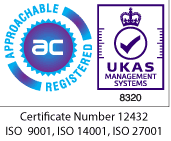ESG | Diversifying Hiring for Professionals
Targeting the Social in ESG - Part 2
Significant Issues in DE&I

However, at the same time, there continue to be many significant issues. As mentioned in our first article, DE&I officers regularly report feeling peripheral to their organisation and speak of a failure to embed DE&I, and there is little faith among executives that their company gets recruitment of the most talented people right. Just as concerning is the fact that a recent survey found that two in five UK businesses do not collect data on the demographic composition of their workforce [3]. In another survey, only just over a half of respondents rated their recruitment and selection processes as ‘effective’ or ‘very effective’ in positively affecting diversity and inclusivity in their company’ [4]. Moreover, there is limited reporting on other things like age and disability/SPLD, and workplace returners/career changers. Even in relation to the commonly reported characteristics, data is rarely especially granular, or cross-segmented (e.g. class and gender), which is a further weakness: more female managers and CEOs is progress, but if they come predominantly from one socio-economic background or are mainly white and heterosexual, other cross-cutting aspects of diversity remain unaddressed.
So, undeniably one of the most important questions facing executives is how organisations can successfully turn the best intentions into reality in diversity recruitment and ensure performance enhancement. Below, we argue that now is the time to rethink hiring processes more systematically in response to the availability of much more data and increasingly sophisticated digital tools and AI, as well as to the rapidly changing economy and societal values of the 21st century, and new ways of working accelerated by the pandemic.
We set these out in two categories:
- Advertising and Publicity
- Application Process
Advertising & Publicity
The process of hiring begins at the point an organisation decides it has a need for a role, followed by how it defines it, and how it goes about advertising it. These are major elements in securing a variety of applicant backgrounds. It has long been known that the bases on which women and men apply for roles differ, with women tending to apply only if they fulfil all or almost all of the requirements. At the same time, the words used in an advertisement can be gendered, racialised, age-biased or seem to exclude people with disabilities; even if this is inadvertent, it can be very damaging. If you don’t get the field, you can’t make your best appointment.
Some obvious points to consider in the light of this:
Be clear, concise and open
- Consider the picture you are presenting of your organisation; this is a sales pitch for the organisation too
- Explain what you can offer, and ensure to list inclusive benefits
- Stating salary has become a matter of debate. You may want to avoid a talent price war with competitors, but not disclosing salary (range) is likely to deter some candidates
- Focus only on necessary skills or experience; place weight (more) heavily on transferable skills
- Don’t define requirements too narrowly
- Signal explicitly that you are keen to receive applications from people who have the skills you are looking for, whatever their experience
- Avoid unnecessary detail
- Ensure the message is inclusive for under-represented groups: e.g. look at the language you are using and get advice
- Be explicit about your diversity and inclusion policies.
Explore new avenues of advertising
- Consult with organisations representing under-represented groups and seek their advice about how to appeal to a wider range of applicants.
- If you are recruiting a substantial intake to the same roles each year (e.g. graduate entry jobs), analyse your marketing and recruitment strategies, including types and location of recruitment event, participation
- Use data analytics to examine how the careers pages of your website could work better, and which social media your applicants are using
- Don’t assume everyone, or even most applicants, will pick up on your vacancy by visiting your website
- Consider whether specialist programmes for targeted groups could be a good source of applications [5]
Look at both internal promotions and the full range of possible external hires
- It is important not to overlook possible internal hires
- Equally, competition for a role is positive, and not advertising, or relying on referrals, risks perpetuating current hiring patterns and, in worst case scenarios, nepotism.
Consider how easy you are making it for candidates to apply for the role
- Many times, to the quiet fury of candidates, they are required to upload their resume and then answer the same questions long-hand all over again, for example.
- If you are going to buy in IT solutions in this area, take time to look for and eradicate duplications
- Are you able to offer flexible working? The options you are able to offer will affect your field just as language does.
Aim to send decisions to all your candidates, with a brief explanation of the general areas in which successful applicants were strong
- Candidates cannot improve themselves if they have no sense of what they might improve on
- And your brand will benefit from being one that takes the trouble at least to send someone a rejection rather than to leave them to make a judgement about how long after an application no news turns into bad news.
Your Application Process
Despite so many changes to the way we work, applying for a professional job has largely retained its traditional format. Submission of a resume and covering letter, sometimes a separate application form instead/as well is followed by some form of initial screening, often automated, and often focused on particular words and experiences. Sometimes there is a test too. Then, if people get over these hurdles, interviews are used to make final selections. The interview often remains the most important element, and many organisations give candidates multiple interviews over several days.
It has long been recognised that the problem with any selection process is the vulnerability of each of its elements to coaching (often at high financial cost), socio-economic advantage, etc.
To try and mitigate some of the effects of socio-economic and other advantage/bias, growing numbers of organisations are using platforms to provide them about contextual information about the candidates in front of them. This has been a welcome development, but while it is often helpful to outsource collating and analysing this information, it does necessitate some loss of control over data and how it is used.
Where applicant tests are concerned, many companies have also worked to find formats that are less susceptible to coaching. Unfortunately, however, this is virtually impossible to do. There are long-established problems with ‘intelligence’ or ‘IQ’ testing:
- It is something that can be coached
- And, despite efforts by test designers, the tests can be subject to cultural bias. Perhaps the most important point for diversity recruitment is the extent to which IQ tests can keep under-represented groups out of education and employment [6]. This is because, while they are often designed with the best intentions at heart, they tend to serve instead to perpetuate trends that already exist.
Where companies have decided to adopt a different style of test, or perhaps even a bespoke test, keeping a test secret does not level the playing field, as, except in the very first iteration, there are always people who have sat it, can re-create it or its format, and can go on to sell coaching online to those who can afford it.
As with IQ tests, companies may therefore find significant disparities when performance is segmented to identify under-represented groups: many may not have begun to analyse this because very little data that would identify such groups is usually collected about candidates at point of application.
Once a candidate gets to interview, it is their chance to answer relevant questions in person and for the interviewer/s to get a sense of them as a potential colleague (as well as for the interviewee to appraise the organisation and their would-be colleagues themselves). In a recent survey, 65% of employers regarded interviews as the most effective means of identifying the right person for a job [7].
Evidentially, this faith in interviews as a selection tool is not easy to substantiate though. In fact, despite how interviews feel to interviewers as a selection tool (there was a real person in front of me saying real things), there are many long-documented issues [8].
It would be naïve to imagine that unfairness can ever be entirely removed from any selection process, but you can attenuate its effects. The major overall message is to use all the information available to you, from the application form to the interview, holistically. Do not view each of these as hurdles on the way to interview and then place all the weight of the final decision on interview outcome.
Some obvious ways to improve processes:
| Stage in Process | Questions to Ask | Actions |
|---|---|---|
| Application | What qualifications do candidates need to do this job, and can ability be demonstrated in more than one way? | Open opportunities to those with different background experience: non-graduates, for example |
| What do you ask applicants to do? What information do you need at this stage in the process? | Decide what you really need. Take care with blind resumes – these can serve to perpetuate inequities by denying context [9] | |
| Do your processes involve applicants providing the same information twice? | Ensure that you avoid this | |
| Could existing format be denying you access to the strongest candidates? | Try paring down to essential elements only | |
| Consider different ways of eliciting information that are clear and explicit: e.g. direct questions instead of covering letter | ||
| Contextual Information Screening | What platforms are available? | Make systematic comparisons |
| What information do they collect and provide? Is this the best information? | Do some research on this; it could be crucial. Some data are more robust than others | |
| How does their platform function? What algorithim do they use? | Ensure you understand and are comfortable with the way in which the platform is processing information | |
| Test | What is the purpose of the test? | Decide whether content matches purpose |
| How do successful applicants perform if hired? | Gather data and analyse | |
| How does test performance compare with other elements of the application? | Gather data and cross-segment analysis | |
| Ask whether this is the best form of screening? | If yes, ensure you understand cross-segmentation to prevent inequities; make samples available to candidates | |
| If no, consider alternatives | ||
| Interviews | Are interviewers trained in unconscious bias? | Introduce training if not |
| What questions are asked in interviews and how are they being asked? | Ensure clarity about the purpose of questions | |
| Do you have common structures for interviews? | If not, introduce them | |
| Do you understand the difference between character assessment and skills testing at interview? | If yes, ask how you weight those | |
| If no, you should research why this is important | ||
| Decisions | How are these taken? | Assess and systematise |
| Do you have processes for considering elements of applications together? | Introduce and formalise. Remember: do not treat each element of the process as a distinct hurdle. Be holistic. |
Key Takeaway
All selection processes are vulnerable to being navigated most effectively by those with the cultural (and sometimes financial) capital to do so. The beginnings of the answer to how organisations can cut through the forest of cultural/financial capital to access talent lie in more nuanced, carefully researched and considered recruitment processes, not quick fixes.
The positive point is that there are now many more ways of easily gathering contextual data and analysing it, and much more research into the dynamics of under-representation. This makes it possible to envisage imminent strides forward in diversity hiring in organisations that are willing to review their processes and think imaginatively about how to assess talent and harness the potential of data and AI in the process.
In the long term, it is likely to become clear that eschewing some of the conventional wisdom about what a strong candidate should look like yields better results from the perspective of coupling diversity with performance. Organisations that are ahead of the curve in recognising this will therefore open the door to greater profitability and value creation and set the standard for their peers. More widely, this will bring dividends for society and for individuals, improving the social impact of the organisation too.
References
[4] https://uk.news.yahoo.com/uk-jobs-recruitment-diversity-inclusion-targets-missed-153007321.html
[5] Some interesting thoughts and ideas can be found at: https://www.forbes.com/sites/ashleystahl/2020/07/21/10-steps-businesses-can-take-to-improve-diversity-and-inclusion-in-the-workforce/?sh=2ad44e25343e
[6] https://www.discovermagazine.com/mind/do-iq-tests-actually-measure-intelligence; https://ectutoring.com/problem-with-iq-tests; https://classroom.synonym.com/disadvantages-intelligence-testing-6381904.html; https://www.independent.co.uk/news/science/iq-tests-are-fundamentally-flawed-and-using-them-alone-to-measure-intelligence-is-a-fallacy-study-finds-8425911.html
[9] https://www.fastcompany.com/90369924/the-effectiveness-of-blind-recruitment
Get in Touch
We have a range of DE&I, ESG,
Executive Search & Selection, and HR focussed services which can be combined in various ways to create the perfect package for your business. To speak to one of our experts, please get in touch:
Contact - Africa
Subscribe to our Newsletter
Blog Subscribe
SHARE CONTENT











